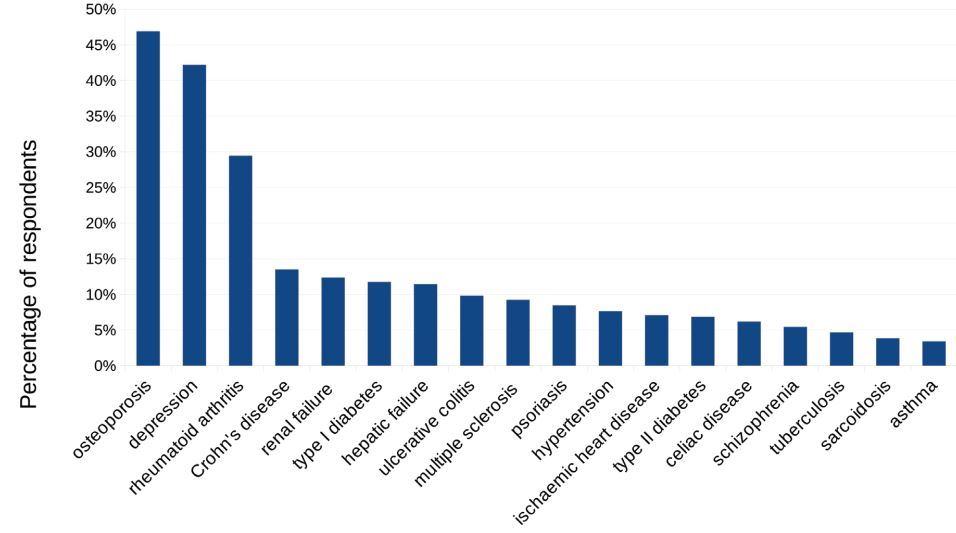Medical students still have poor Vitamin D knowledge (score of 4.6 out of 20 – Poland)
Knowledge of Vitamin D and its Supplementation Among Students of Northern Poland
Eur J Trans Clin Med 2018;1(1):46-54. DOI: 10.31373/ejtcm/92067
Przemystaw M Waszak1 2 [email protected], Aleksandra M^dza2, Janusz Springer3, Martyna Zgtobicka2, Paula Ogrodnik2, Paulina Kalinowska2, Piotr Kmiec4, Maria Lizakowska-Kmiec5, Krzysztof Sworczak4, Michat Zmijewski6
Department of Hygiene & Epidemiology, Medical University of Gdansk, Poland
Students' Scientific Association, Histology Department, Medical University of Gdansk, Poland
Department of Preventive Medicine and Education, Medical University of Gdansk, Poland
Department of Endocrinology and Internal Medicine, Medical University of Gdansk, Poland
Endomed Diagnostic Medicine Centre, Gdansk, Poland
Histology Department, Medical University of Gdansk, Poland
📄 Download the PDF from Research Gate via Vitamin D Life
Score of only 4.5 out of maximum 20

No student got even half of the answers right
Cancer was not even mentioned as a possibility

Vitamin D deficiency is a worldwide public health problem. The objective of this survey was to assess the undergraduate students' vitamin D status and knowledge about this vitamin.
Materials and methods: an online multi-choice survey was designed and launched in Northern Poland (Gdansk region). The first part of the survey assessed diet, supplementation, UV radiation exposure (UVE) and general health of respondents. The second part was a vitamin D knowledge test (vitamin D optimal level, deficiency-related diseases). 1766 student volunteers responded to the survey: 369 male and 1397 female. Data was divided according to the respondents' sex and university affiliation. Appropriate parametric or non-parametric statistical tests were used with statistical significance set at p<0.05.
Results: regular consumption of vitamin D-rich food was high, except for fish (only 18; 22%). High number of participants did not declare any type of supplementation (43; 44%) and only occasionally were exposed to UV (77%; 80%). The most frequently recognized disease linked to vitamin D was osteoporosis. Medical University students obtained higher test scores (4,55), however this did not correlate with healthy vitamin D habits.
Conclusion: undergraduate medical and non-medical students have unsatisfactory vitamin D status and poor understanding of its function and impact on health, which implies the need for changes in the educational program.
